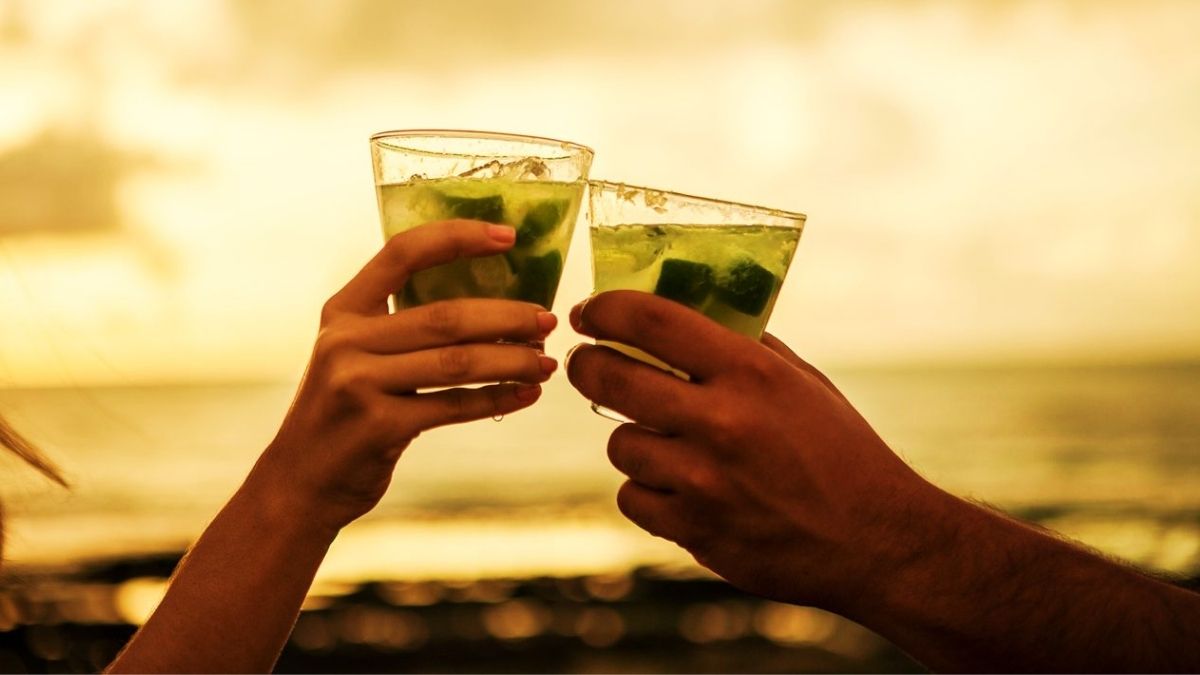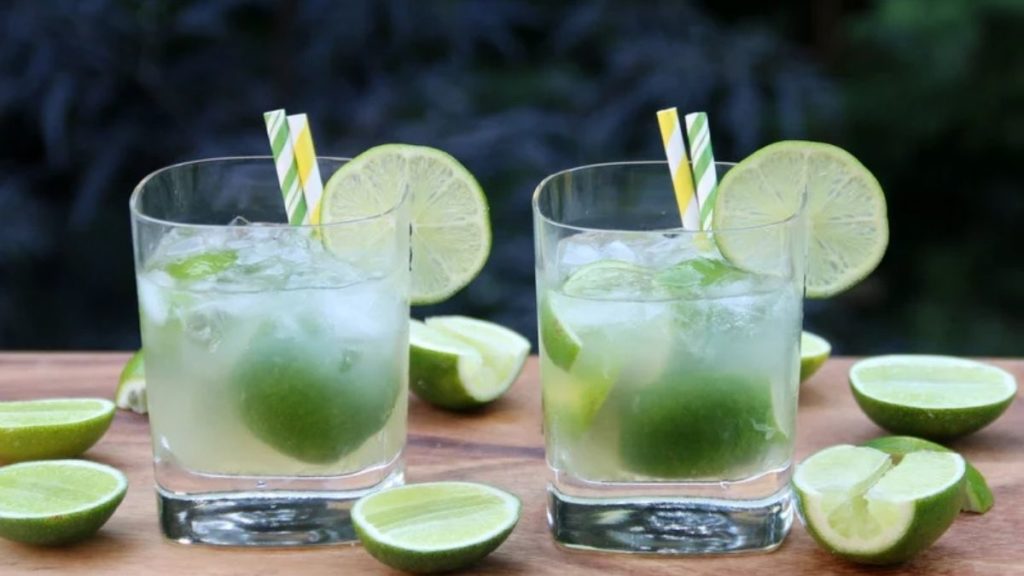Cachaca is a distilled spirit made from the juice of sugar cane. It is pronounced Kah-SHAH-sah. People often think it is a type of rum, even though it is only made in Brazil. Cachaca, Brazil’s national spirit, and the caipirinha, its most famous cocktail, were the most popular drinks for a long time. Cachaca often sells more than gin or Tequila, but almost all of it is drunk by Brazilians. It is now popular in the U.S., Portugal, and other places worldwide, and you can find it in well-stocked bars and liquor stores.
Cachaca is a liquor made in Brazil from sugar cane. Like rum, there are two kinds of cachaca those that haven’t been aged, called “Branca” (white) or “Prata” (silver), and those that have been aged, called “amarela” (yellow) or “ouro” (gold). Most of the time, the cheaper one is the one that is bottled right after distillation.
What is Cachaca Made from?
Cachaca is Brazil’s national spirit, a South American country, and it can only be made in Brazil. In Brazil, more than 3,000 legal distilleries and almost the same number of illegal distilleries make cachaca. The people who make cachaca can experiment with the sugar cane, the distillation process, and the barrel aging to bring out different flavors in the spirit, just like any other distiller.
Cachaca must be made from fresh-pressed sugar cane juice that has been fermented. The cane must be grown in Brazil, but distillers use different varieties to give the cachaca; they make small differences. The yeast turns the sugar in the juice into alcohol, which is then distilled. Most cachaca only goes through one distillation, and the best use is copper pot stills. Some kinds of cachaca are put in bottles right after they are distilled or after resting for a while in stainless steel tanks. Other kinds are aged.
Aging makes cachaca truly unique. American or French oak barrels, either new or used, can be used (previously housing spirits like bourbon or brandy). They can also make their barrels out of the local woods, making the cachaca unique. A cachaca that has been aged in Brazil nut barrels will taste very different from one that has been aged in zebrawood. Some types of wood used are ambulance, balsam, Cabrera, tap into, and teak from Brazil.
Most cachaça has about 40 percent alcohol by volume (ABV, 80 proof). Some people choose to put more alcohol in their specialty cachaca’s when they bottle them. As with whiskey, this means you’re getting a liquor with a fuller flavor.
Types of Cachaca
Like rum and Tequila, cachaca is divided into different types based on color, affecting how they are stored after distillation.
Branca
In Portuguese, branca cachacas means “white.” They may also be called Prata, clássica, or traditional (traditional). These are either not aged, rested in stainless steel vats, or stored for less than a year in wood that doesn’t change the color of the spirit.
Amarela
Amarela means “yellow,” but this kind could also be called “gold” or “envelhecida” (aged). For a bottle of cachaca to be called aged, at least half of it must have been stored for at least a year in barrels that can’t hold more than 700 liters. “Premium” aged cachaca must be made up of only spirit that is at least one year old, while “extra premium” means that all of the cachaca’s are at least three years old.
What does Cachaca Taste Like?
The taste of cachaca can be very different, but it usually has a slight sweetness (much less than rum). It often smells like plants and has a few hints of fruit. Many more mass-produced brands can taste like alcohol mixed with chemicals, while top-shelf brands taste more fruity and have hints of sweets. Unaged cachaca’s made in smaller batches often taste grassy or funky, like Rhum Agricole or Bianco tequila. Cachaca’s that have been aged pick up flavors from their barrels. They can taste like Christmas spices, baked or dried fruits, coffee, or even grass (in a good way).
Like most spirits, the taste of cachaca can change depending on how it’s made and how long it’s aged. Cachaca’s made in factories are rough, taste like chemicals, and are sometimes even oily. Unlike Rhum Agricole or Bianco tequila, unaged cachaca made in smaller batches often tastes grassy or funky. Cachaca’s that have been aged pick up flavors from their barrels. They can taste like Christmas spices, baked or dried fruits, coffee, or even grass (in a good way).
Where to Buy Cachaca?
Even though it’s getting easier to find, cachaca is still not very common. Look for it in liquor stores with a wide range of imported drinks. Also, you can shop online. Different states and countries have different rules about shipping alcohol, so that’s not an option for everyone.
How to Drink Cachaca?
You can drink cachaca in any way you want. The best cachacas are those you can drink straight or with ice. Some people also like to drink it as a shot. It’s also a very versatile liquor for making cocktails, and modern bars quickly make room for it. But cachaca is a part of Brazil’s culture best enjoyed in the caipirinha, the country’s national drink. It’s like an old-fashioned cachaca, made with lime and sugar instead of sugar and water.
If you need a reason to drink cachaca, there are even holidays for it:
- September 13 is National Cachaca Day, and
- June 12 has been designated as International Cachaça Day.
- May 21 marks a regional cachaca celebration within the Brazilian state of Minas Gerais.
Cocktail Recipes Using Cachaca
The caipirinha and the batida are two of Brazil’s most famous cachaca drinks. People are always coming up with new ways to use it, pairing it with common and unusual flavors. It can also be used in many rum drinks.
- Batida
- Café Brasileiro
- Caipirinha
- Raspberry Bellini
- Rhyme & Reason
What is the Difference Between Cachaca & Rum?
Cachaca is a Brazilian drink made by distilling sugarcane juice that has been fermented. Rum can also be made from the juice of sugar cane, but most of it is made from molasses. The style of Rhum Agricole, made from sugarcane juice, is more similar to the style of cachaça. Both have more grassy and vegetable flavors, with a funkiness that makes them stand out.
Cachaca is often called “Brazilian rum,” When it was first brought to the U.S., it was listed as a type of rum for ease of use. But cachaca was probably made before rum, and many historians say it was the first distilled drink in Latin America. It is more accurate to think of cachaca as a different type of liquor-related to rum because it is also made from sugar.
The main difference is that cachaca is made from sugar cane juice that has just been pressed. On the other hand, rum is usually made by distilling sugar leftovers like molasses (Rhum Agricole is made with sugar cane). It’s just a small detail, but it’s important because cachaca tastes raw, vegetal, fruity, and a bit sweet. Also, aged rums are often stored in used bourbon or sherry barrels, while aged cachaca is sometimes stored in native woods, which give it a unique flavor.
What are the Popular Brands of Cachaca?
Brazil’s distillers didn’t care much about exporting cachaca until the last few years. Even now, the U.S. and other countries have a small number of brands to choose from. The good news is that most cachaca you can buy outside of Brazil is of the highest quality. Even though you might like one better than another, it’s hard to find a bad cachaca.
- Avuá
- Bossa
- Cabana
- Leblon
- Novo Fogo
- Yaguara
- Ypióca
History of Cachaca
In the 1600s, Portuguese settlers brought sugar cane to Brazil. Farmers found that fermenting the plant made a liquor that tasted sweet. Enslaved Africans who worked in sugar cane mills often drank it to ease their pain and keep them going during their long, hard days. They called it cachaca because there was foam on top of the sugar cane pots where it was boiled.
Because it was easy and cheap to make, the spirit quickly became popular all over Brazil, not just among enslaved people and the working class. Today, making cachaca is a more complicated process, and it is stored in barrels of more than 20 different kinds of Brazilian wood to give the different spirit flavors.
The caipirinha is a newer drink than cachaca, which has been around since the 1500s. One theory says that it was first made around 1918 when the liquor, lime, garlic, and honey were mixed to help people with the Spanish flu. Colds are still treated with the cocktail as we know it today.
Conclusion
By law, cachaca must come from Brazil and have between 38 and 48 percent alcohol by volume. Cachaca is made from fermented and distilled fresh sugarcane juice and can be stored in stainless steel containers or wooden barrels. White Cachaça (Branca) is made from stainless steel or wood that doesn’t add color. Different Brazilian woods can be used to store cachaca, giving it a yellow color (called “amarela”), better smells, and softer flavors. For instance, lowers acidity and adds cinnamon and vanilla. The spirit can also be aged for at least one year (premium) or three years (extra premium).
Fresh, grassy, and light, cachaca’s that haven’t been aged have a hint of herbs. An aged version is darker and richer, with hints of toffee, vanilla, and spices. In many cocktail recipes, you can use cachaca instead of white rum, vodka, or Tequila. It works great, giving your cocktails a punchy, summery feel that will set them apart. Fresh, grassy, and light, cachaca’s that haven’t been aged have a hint of herbs. An aged version is darker and richer, with hints of toffee, vanilla, and spices. In many cocktail recipes, you can use cachaca instead of white rum, vodka, or Tequila. It works great, giving your cocktails a punchy.


